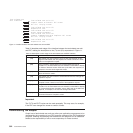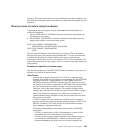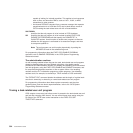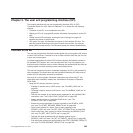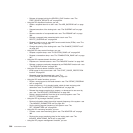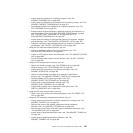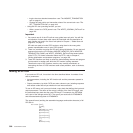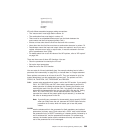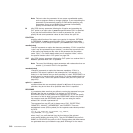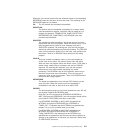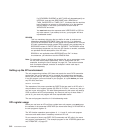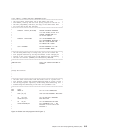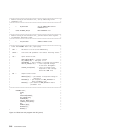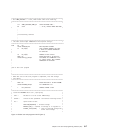Note: Failure to clear the parameter list can cause unpredictable results,
such as program checks or storage violations. If you are building the
parameter list incrementally, specify CLEAR before specifying any
parameters. If you are not building the parameter incrementally,
specify CLEAR when the CALL is issued.
IN tells CICS that any parameter following the IN option and preceding the
OUT option is an input value. It must be specified when CALL is specified.
If you use the function without CALL to build a parameter list, you can
specify IN and some parameter values to store values into your list.
FUNCTION
specifies which function of the macro you require; for instance, GETMAIN
or FREEMAIN. It must be specified when CALL is specified, and unlike
other options, it must always be explicit—you cannot code “FUNCTION(*)”.
mandin(value)
“mandin” represents an option that becomes mandatory if CALL is specified.
“value” may be represented by an asterisk (*) to show that a previous use
of the macro has already set the value in the parameter list (see above
under “CALL”). For further details about how to complete “value”, refer to
the specific function calls in “XPI syntax” on page 319.
OUT tells CICS that any parameter following the OUT option is a receiver field. It
must be specified when CALL is specified.
Note: The use of the following output parameters with values other than an
asterisk (*) is invalid if CALL is not specified.
mandout(value)
“mandout” represents an option that becomes mandatory if CALL is
specified. The output is placed in the parameter list if an asterisk (*) is
coded, or in the location that you have specified in “value”. RESPONSE is a
special case of a mandout option (see below). For further details about how
to complete “value”, refer to the specific function calls (see “XPI syntax” on
page 319).
optin1,2...; optout1,2....
represent items that are completely optional for all forms of the macro; in
particular, they do not have to be specified when CALL is specified.
RESPONSE
is a mandatory data area that you define to receive the response from your
XPI call. You can use an asterisk (*) to indicate to CICS that the
RESPONSE value is to be placed in the parameter list, or you can specify
the name of a field in which you want the RESPONSE value to be placed.
You need not code the RESPONSE option if you are using the macro
without CALL to build a parameter list.
The response from any XPI call is always one of ‘OK’, ‘EXCEPTION’,
‘DISASTER’, ‘INVALID’, ‘KERNERROR’, and ‘PURGED’. There are
standardized names (EQU symbols) for the response code values provided
by CICS:
xxyy_OK, xxyy_EXCEPTION, xxyy_DISASTER, xxyy_INVALID,
xxyy_KERNERROR, and xxyy_PURGED,
where “xxyy” is a prefix derived from the four letters of the relevant
macro-name following the string ‘DFH’. Thus for DFHSMMCX the prefix is
SMMC; for DFHLDLDX the prefix is LDLD. Equate values with these names
are generated when you include the copy book DFHxxyyY for the macro
310 Customization Guide



